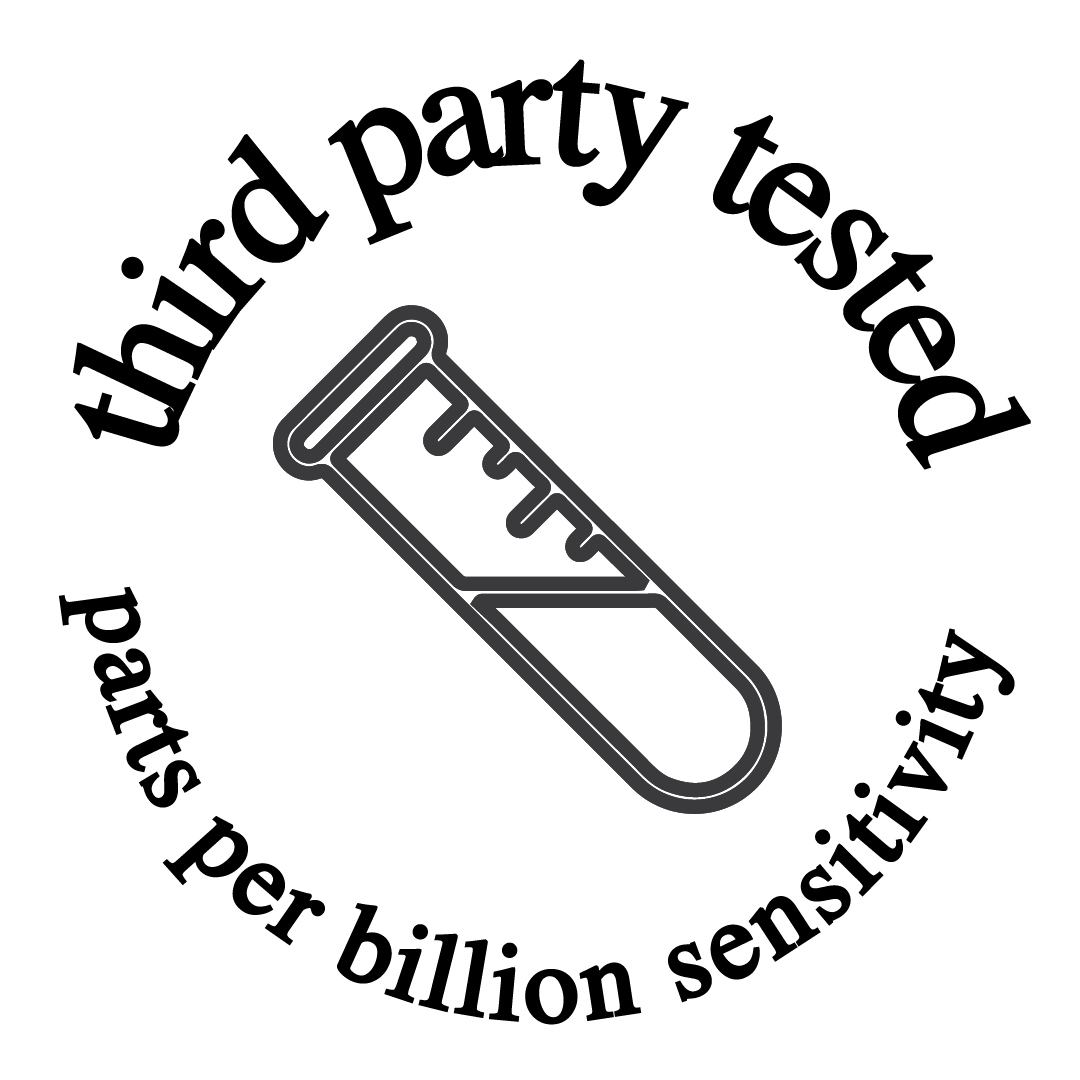read time: 10 to 15 minutes.
long term stress + the immune system.
table of contents.
-
- biology story
-
stress - fight or flight response
- lack of sleep
- constant anxiety and stress
- societal expectations
- excess cortisol
- the grind
- screens
- parts of the body affected
- liver
- immune system
- long-term
- effects on the immune system
-
downregulation
- natural immune response
- specific immune response
- reduced cytotoxicity in t cells
- decrease in natural killer cells
- overproduction of cytokines
- reduces and suppresses response
- cortisol long-term
- maladaptive resource allocation
4. herbs + habits effective in combating stress
- adaptogens
- nervines
- immunomodulators + immunostimulators
- sleep + stress
- exercise
- hydration
fight-or-flight.
we live in a world that is filled to the brim with stressors. as soon as you wake up in the morning, it’s on. your device sending you countless notifications, an overdraft fee from your bank, your boss already on your case about something — all while you quickly devour breakfast in a massive line of rush hour traffic. we are all seemingly used to the hustle of daily life, often telling our friends and family we thrive in such energy. however, human beings did not biologically evolve to handle the prized “grind” long-term.
we need more balance.
a quick biology 101 recap.
most of us have heard of the fight or flight (FoF) response. this is the body’s response to danger, stress, or any threat that needs a fast and effective response from your physical body and mind.
it is governed by the sympathetic nervous system.
when we notice a threat, our bodies go straight into action, releasing adrenaline and cortisol (the stress hormone), putting our livers to work converting glycogen to glucose and in turn ATP (energy molecule), our hearts begin to beat faster, the pupils dilate, and lungs take in more oxygen. all of this happens so we can respond at peak performance and (hopefully) survive the threat.
the grind.
“the grind” values incessant and relentless hard work — mental and physical — over resting and recovering.
lack of sleep, stress eating, a caffeine IV throughout the day, and piles of work all contribute to damaging amounts of stress on our physical bodies and our mental health. the constant stimulation of screens, social media and information being shoved into our brains keeps the sympathetic nervous system rolling on high.
so, what actually happens to our bodies with this long-term stress?
our bodies on chronic stress.
think of a machine that is always working at high capacity. if this machine isn’t well-oiled, taken care of, or given routine checkups to ensure peak health of its parts, the machine will eventually break down, and it won't take very long. this is what happens to our bodies. after months and even years of chronic stress, acceerated wear and tear is inevitable.
let’s take a peek at the immune system throughout acute and chronic stress to understand the consequences.
when cortisol is released during the fof response, our specific (adaptive) immune response is suppressed, as this is the part of our immune system that takes the most energy and time to respond.
lymphocytes (the white blood cells for this response) have the ability to attack one specific antigen (foreign molecule) by attaching to them via customized receptor sites and sticky molecules called integrins.
however, they need to multiply to create an army that ingests the rest of the identical invaders, so this process is slow to respond and the body doesn’t have excess energy to give while in the sympathetic state.
not to mention when we are in fof, secreted hormones reduce the stickiness of our friends, integrins, so the lymphocytes lose the ability to stick to pathogens.
on the other end of things, our natural immune response, the non-specific and all-purpose response, does receive energy during fof. that being said, the body tends to be pretty particular about what the response focuses on.
there is evidence that shows our natural immune response pays specific attention to the skin and blood as a way to gear up for any bites or wounds that might occur during the threatening event. however, since the brain is evolutionarily conditioned to believe the stress response is a matter of survival, energy is only allocated towards this action if it doesn’t take away from the fof behavior. further, the excess cortisol that is released will trigger an anti-inflammatory response, so if a pathogen (disease) drops by, there’s a lack of symptoms.
after the event, the cortisol levels drop and the immune response normalizes. the inflammatory response kicks in and you have a runny nose, sore throat and fever. with long-term build-up of cortisol, however, we see global immunosuppression of both the adaptive and natural immune response.
adaptive response t cells (lymphocytes) are reduced and if there is a consistent release of cortisol or lack of sleep, integrins lose their ability to stick. the cytotoxic ability of natural killer cells (natural response) also decreases, leaving the body short on defenses. the immune system responds to the constant levels of cortisol with an over-production of pro-inflammatory immune cells (cytokines) and inflammation increases throughout the body.
systems become increasingly out of balance and fatigue, anxiety, and sickness become a new normal.
what to look out for and what to do.
so how do we target the culprits and what can we do in a preventative and active way to make sure our bodies don’t get burnt out? firstly, we’d like to take this moment to mention that not all stress is bad for you.
in certain situations stress is the only reason we are able to make it out alive. in addition, exercise is also a form of stress on our bodies, yet it is beneficial when we do it in moderation. while high, intense levels of exercise without adequate rest and recovery can lead to injury, consistently moderated acute exercise and long-term training increases the skeletal muscle’s ability to adapt and change. during exercise, levels of reactive oxygen species (ros), or highly reactive chemicals are released.
although detrimental to untrained muscles, frequently exercised muscles receive improved antioxidant capacity, mitochondrial biogenisis, and increased aerobic capacity from ros. the muscles are then able to handle higher intensity over time. this is an example of hormesis. small amounts of an agent that may be toxic in large doses supports strength and resilience in the long run. awareness around understanding how much stress our bodies can handle is the first step in preventing stress-induced issues. slowing down is how we get there.
let’s take a look at how lifestyle choices and health are interconnected, and how getting to the root of stress can impact the immune system and our overall wellbeing.
good food.
excess sugar and processed foods weigh the body down and cause our organs, such as the liver, to become slow and sluggish. the liver is responsible for removing toxic substances/chemicals from the body, controlling glucose levels, producing bile to help digest food, turning fat into energy, and assisting the immune system. with consistantly excess sugar, a spikes in blood glucose overburdens the liver. this type of stress on the liver causes illnesses such as diabetes and fatty liver disease.
healthy food will have the opposite effect on organs and actually lend additional support to the functioning, creating a highly tuned machine. this ultimately creates more adaptive capacity or bandwidth for the mind-body to maintain resilience and fight for balance under stressful conditions.
exercise + sleep.
another common stressor is the struggle with a stable sleep and movement routine. mild and moderate exercise/movement strengthens the heart, respiratory system and muscles and is a highly effective way to promote restful, longer sleep. it also triggers our brains to release an endogenous opioid called beta-endorphins. these brain-produced chemicals have been linked to improvement of mood and natural pain relief.
movement promotes a stronger, more physically resilient body, a happier brain, and it’s able to effectively exhaust the body. in doing so, falling asleep is easier and quality of sleep (achieving each stage of sleep) improves.
stage 3 of sleep (nrem 3) happens to be the most important stage for immune system health and development. this is considered “deep sleep” before the rem stage and is the most difficult to achieve when internal and external stressors are at play (blue light exposure, sleeping in an unfamiliar location, jet lag, anxiety etc.). without this stage, the immune system is unable to boost its production - specifically of those important, sticky t-cell allies, integrins.
negative stress → lack of sleep → less time spent in nrem 3 → lowered immune function.
in order to protect the immune system from the negative impacts of stress, it is crucial to provide the body and brain with the best sleep possible.
outside support.
when it comes to categories of herbs that build stress resilience adaptogens, nervines and immunomodulators/immunostimulators come to mind. these are fancy pants terms, but not so difficult to understand.
adaptogens, such as the famed reishi mushroom and ashwagandha found in our adaptive cacao, are known to calm the nervous system (fof response), as well as boost physical and mental resilience to stressors. with consistent use, adaptogens have the ability to strengthen mitochondrial health and build cellular resistance to oxidative stress. this naturally improves the body's endurance to stress so it can handle higher levels overtime.
the adaptive cacao superfood is a great alternative to any caffeine beverage if you are interested in cutting out or simply cutting back your intake. some other energizing adaptogen favorites include ashwagandha, holy basil, and rhodiola, eleuthero, cordyceps, and more.
nervines and immunomodulators/stimulators are herbal allies that support the physical and mental. nervines lend a hand to the nervous system and can be sedating, stimulating or calming. for example, lemon balm works its gentle action of frayed and overworked nerves, soothing anxiety and depression and helping calm any nervous tension in the body.
immunomodulators/stimulators have a way of bringing a state of balance to the immune system (modulation) or the capacity to ramp up immune forces to combat pathogens. elderberry and flower are some of the most revered, having antiviral and anti-inflammatory properties while also preventing any cold or flu viruses from attaching to our healthy cell walls.
in regards to helpful actions to combat stress, these suggestions are the very tip of the iceberg. along with external assistance, listening to our bodies and taking a holistic approach are just as important if we want to understand what is causing any issues.
in order to feel the best, it is our responsibility to take some time to listen and dive a bit deeper into what may be causing the stress in the first place. since our functions and symptoms are interconnected, supporting whole body health will result in some profound, positive changes. with all they do for us, processes like our immune system deserve that extra bit of attention.
definitions.
hormetic effect.
the hormetic effect is the process in which your mind-body becomes stronger and more resilient from consistent, small amounts of an agent that would otherwise be harmful in larger doses.
- small dose over a consistent period of time = biologically beneficial
- large dose over a short period of time = toxic
for example: small amounts of intense exercise over a long period of time will build strength and endurance. however, large amounts of high-intensity exercise over a short period of time may lead to injury and health issues.
“everything in moderation” or “what doesn’t kill you makes you stronger” are both good ways of thinking about it.
this effect is seen in physiology, nutrition and toxicology and stems from two parts of the brain: the hypothalamus and amygdala. the hypothalamus controls emotions, sleep cycle, appetite and body temp and is the “reactive” part of the brain.
the amygdala is in charge of emotion, memory and the fight-or-flight response (stress response). it is considered the “emotional eyes and ears of the hypothalamus.” while the hypothalamus gives generalized responses and drives to stimuli, the amygdala gives highly specific and finely tuned learned responses.
for example: if you are hungry, the hypothalamus says “give me food!” however, due to specific memories, the amygdala knows you don’t like and want just any food, so it steers you in the direction of dishes that you enjoy.
the amygdala plays a key role in learning and providing “rewards.” this happens through up-regulation of dopaminergic neurons responsible for letting the hypothalamus know that what is happening is positive. the direct result is conditioning of the brain. when the amygdala learns that high-intensity exercise results in a blast of endorphins and a stronger, more resilient body, dopaminergic pathways are strengthened and there is no longer fear around this stressor. the hypothalamus might not want the exercise, but the amygdala calms it down and soon, both may be in favor due to the chemical reward in the brain.
on the flip side of things, if the body engages in too much high-intensity exercise over a short period of time, the consequence may be injury and/or detriment to the person’s overall health. finding the sweet spot, or hormetic zone, results in homeostasis/balance in the body.
let’s take adaptogens for example.
this class of herbs are responsible for regulating the body’s stress response so the body and brain are able to manage moderate stress levels over longer periods of time. while chronic stress leaves the body in shambles, adaptogens build resilience to stress and provide the body with a steady supply of energy.
when adaptogens are used on a consistent basis, they stimulate “cellular workouts” known as stress inoculation. these cell workout’s strengthen mitochondrial health, resistance to oxidative stress, and repairs damaged proteins. through the stimulation of heat shock protein production, adaptogens protect the body from physical damage that occurs from chronic stress. this consistent “stressful” cellular workout that adaptogens encourage is the perfect.
immunomodulators + stimulators.
immunomodulators/stimulators are supportive of high or consistent stress and dysfunctional immune functioning. these herbs have a way of bringing a state of balance to the immune system (modulation) or ramping up immune forces to combat any pathogens or foregin molecules (stimulation).
for example: elderberry and flower are some of the most revered. having antiviral and anti-inflammatory properties, they also prevent any cold or flu viruses from attaching to our healthy cell walls. along with this, they also ramp up natural immune function, so an excellent ally to have on hand should you feel any prickle in the throat.
maladaptive resource allocation.
the body's process in which valuable energy resources are diverted away from crucial biological processes (immune system, digestion, detoxification, neurogenesis, etc.) in order to fuel the fight-or-flight response that is triggered by the sympathetic nervous system. maladaptive resource allocation happens overtime when the body and brain are chronically stressed as energy is consistently being utilized to support processes like increased heart rate and breathing, muscle strength, heightened vision, and a shift towards the instinctive, reactive part of the brain. overtime, there is massive imbalance in the body as homeostasis is constantly being disrupted by the stress response.
nervines.
nervines are a class of herbs that support the nervous system. either sedating, stimulating, calming or used as a tonic. these herbs team up with nerves in order to repair, strengthen and/or support actions.
for example: lemon balm. this herbal ally works its gentle action of frayed and overworked nerves, soothing anxiety and depression and helping calm any nervous tension in the body.
another example: bitter vervain, is helpful for the overworked and overstimulated. it too promotes ease in the body, sometimes to the point of pure peace and gentle sleep.
sympathetic nervous system.
the sympathetic nervous system is the system responsible for activating the stress response, or fight-or-flight mode is order to successfully face or run away from a threat/stressful situation. humans have evolved to respond to stress with this response as a means of survival.
the peripheral nervous system is made up of two parts: sympathetic (SNS) and parasympathetic (PNS). activation of the SNS is triggered when a threat or stressor occurs. the body and mind go into the fight-or-flight response (FoF) or stress response in order to run away from or face the situation.
when FoF mode is activated, energy resources are focused on strengthening muscles, increasing heart and respiratory rate, sharpening vision, releasing adrenaline and cortisol (stress hormone) and inhibiting bladder contractions. resources are diverted away from vital processes like immune function, digestion, nutrient absorption and protein synthesis as these processes require higher amounts of energy.
the FoF response is beneficial to our bodies as it is a mechanism that is needed to survive. it is one of many regulatory processes that the SNS controls throughout the day. another example would be triggering the body to sweat when the temperature rises. however, if the SNS is activated on a daily basis (as seen through chronic stress), the body becomes out of balance leading to detrimental effects like inflammation, depression and anxiety. we can’t live without the SNS, but ensuring moderation is crucial for maintaining homeostasis in the body.
references.
-
- barnes p. j. (2006). how corticosteroids control inflammation: quintiles prize lecture 2005. british journal of pharmacology, 148(3), 245–254. https://doi.org/10.1038/sj.bjp.0706736
- harber, v. j., & sutton, j. r. (1984). endorphins and exercise. sports medicine (auckland, n.z.), 1(2), 154–171. https://doi.org/10.2165/00007256-198401020-00004
- john hopkins medicine (2021). the digestive process: the liver and its many functions. johns hopkins medicine. retrieved from: https://www.hopkinsmedicine.org/health/conditions-and-diseases/the-digestive-process-the-liver-and-its-many-functions.
- morey, j. n., boggero, i. a., scott, a. b., & segerstrom, s. c. (2015). current directions in stress and human immune function. current directions in stress and human immune function. retrieved from: https://www.ncbi.nlm.nih.gov/pmc/articles/pmc4465119/.
- segerstrom, s. c., & miller, g. e. (2004). psychological stress and the human immune system: a meta-analytic study of 30 years of inquiry. psychological bulletin, 130(4), 601–630. https://doi.org/10.1037/0033-2909.130.4.601
- steinbacher, p., & eckl, p. (2015). impact of oxidative stress on exercising skeletal muscle. biomolecules, 5(2), 356–377. https://doi.org/10.3390/biom5020356
JOIN OUR MAILING LIST.
join our botanical crew and enjoy 15% off your first order.





